Have a look at the following parts of artwork and think of how much money they’d each be worth:
Take a closer look at the them – some so simple and yet quite engaging, the colours subtle, some mathematical. The designs certainly deserving recognition…
Remember the amount? Here’s what I’d pay – not more than Rs. 10 for most of them! Cheap labour eh? Look further:
Picked up on the hints? If you are Indian and haven’t got it by now, take out your wallet and pay up- it might strike you then. Send the link of this blog to your friends and see how observant/ignorant they are!
Some say good art is money.
I’d say money is good art!
Some of the smaller denominations of Indian currency currently in use :
Many people hope for a crisp note or a shiny coin during their monetary transactions. But there’s something enchanting about a well-used coin/note …the stories it could tell!
 Coins- Rs10, Re1, 10p, 1p
Coins- Rs10, Re1, 10p, 1p
Coins of very small denominations are no longer in use. The 25p ceased being legal tender money from June 30, 2011.
Variations
The above is a quarter ruppee, pre-independance, nickel coin with the crowned head of King Emperor George VI and an Indian tiger on the other side. The value is written in 3 languages- Hindi, English and Urdu. Urdu is no longer used on coins now
.
The Portugese State of India, collectively referred to as Goa was established in 1505 and they stayed on till 1961. The currency used till 1958 was Rupia and from then onwards was the Escudo ( 1 rupia = 6 escudo = 1 rupee) . The above is a bronze 30 centavos coin (1 escudo = 100 centavos)
.
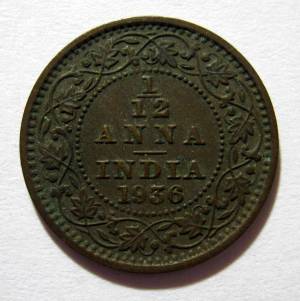 Above is a bronze, pre-independance 1/12 anna coin from 1936 by the British East India Company. The literacy rate of India in 1930 was around 8% and yet they used fractions!
Above is a bronze, pre-independance 1/12 anna coin from 1936 by the British East India Company. The literacy rate of India in 1930 was around 8% and yet they used fractions!
From 1835-1957, Rs1= 64paise , 1 anna=4paise
From 1957, Rs1 = 100 naya paise , 4 anna = 25 naya paise
as they chose to shift to a decimal series (naya meaning new to avoid confusion)
.
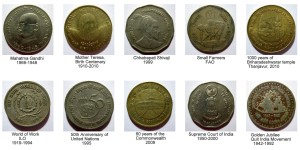 It is hard to find older coins now, but if you have a budding interest in them, you’d be surprised to find something unique if you look hard enough. Above are a sample of memorial coins I’d found through everyday use over a period of time. These are produced by the mint even now as can be seen by the year.For example, the coin marking the birth centenary of Mother Teresa and 1000 years of Briharadeshwarar Temple was produced in 2010 and is still doing the rounds now.
It is hard to find older coins now, but if you have a budding interest in them, you’d be surprised to find something unique if you look hard enough. Above are a sample of memorial coins I’d found through everyday use over a period of time. These are produced by the mint even now as can be seen by the year.For example, the coin marking the birth centenary of Mother Teresa and 1000 years of Briharadeshwarar Temple was produced in 2010 and is still doing the rounds now.
So the next time someone hands a coin over – turn it around and have a good look- you may just find something!
Note: All photographs are taken by the author. Do not use without prior permission.

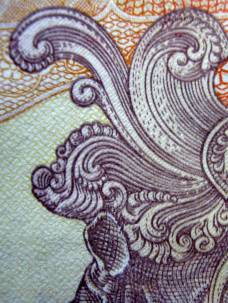
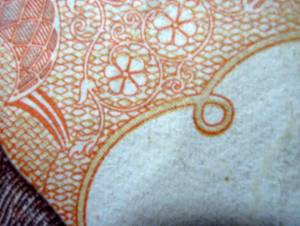
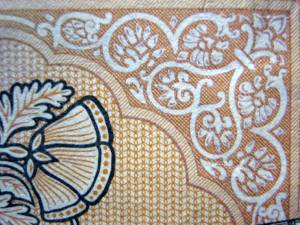
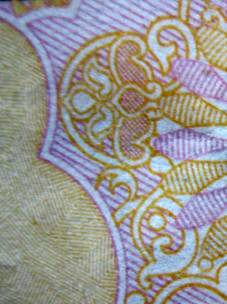
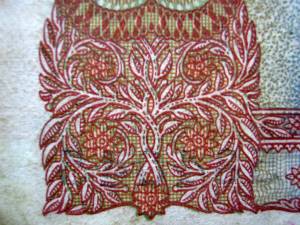
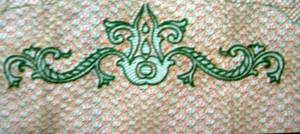
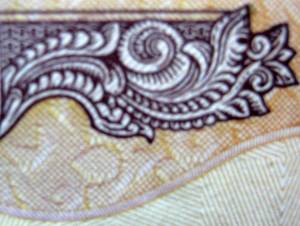
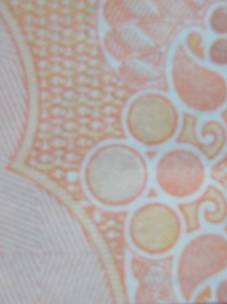
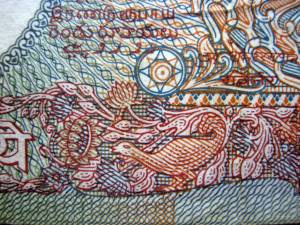
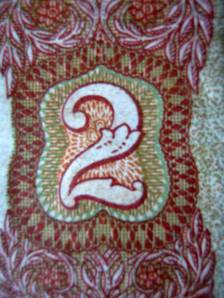
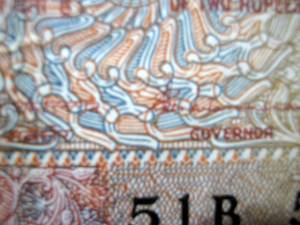
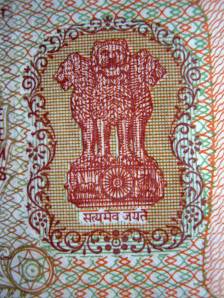
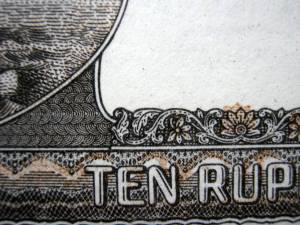
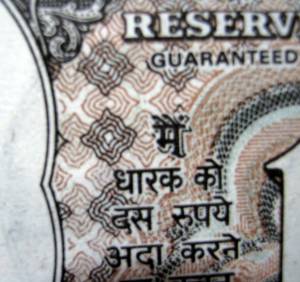
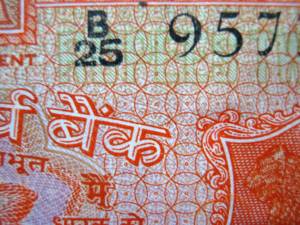
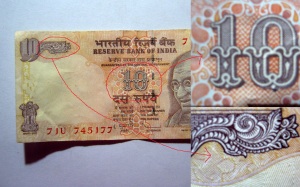
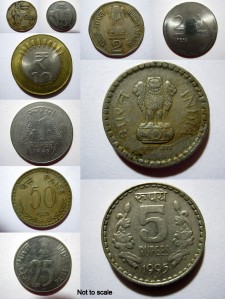
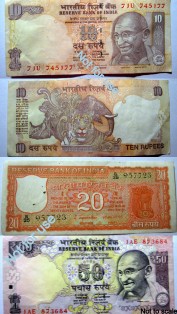
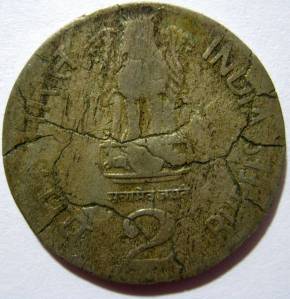
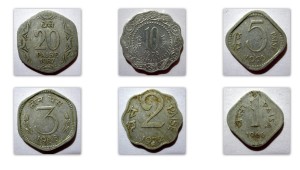
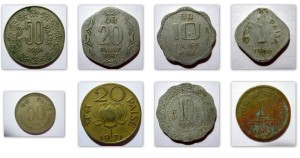
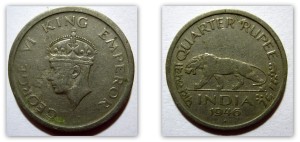
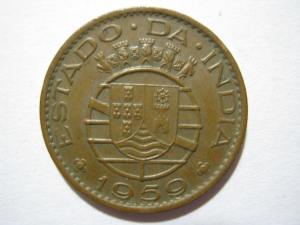
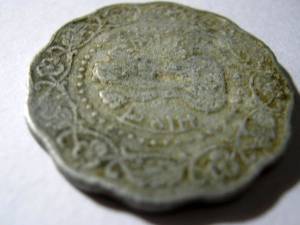
Great work! Interesting. :)
LikeLike
Thank you MGM
LikeLike
YAAAAAAAAAYY Naiadseye! It was awesome. :*
LikeLike
Thank-you Gal55
LikeLike
naiadseye,
I found this article delightfully interesting and engaging.Coins and notes are like historical monuments in a way,representing the historical journey of humankind albeit via a financial one.And if I am not wrong they also tell the story of metal prices and usage,I mean take the 25p coin example and the reason it was discontinued.Perhaps in a subtle manner they give away loads of information,both of economic and historical nature.And that’s why,no doubt,people collect them.And your perspective that ‘Money is Good Art’ is shared by many and I am pretty sure that we all have,at some point in our lives, recognized that.You have beautifully(and painstakingly) reinforced that.
The photographs are brilliant!
Good job.Looking forward to more pieces from you!
LikeLike
Thank-you Shreya :)
Yes, very true that coins and notes depict a lot more than their face value and contain a lot of economic, historic and social information. In a way, they are like time-capsules!
Glad you liked the post.
LikeLike
Reblogged this on Collecty.net.
LikeLike
Thanks for the advice. I don’t know if I’ll ever make it to India, but if I do I’ll be sure to stop by Delhi and check that out.
LikeLike
These Indian coins and notes are really interesting. I only have a couple of British India coins from the 40s, but I’d like to expand my collection.
LikeLike
Coins are available on online auction sites, but if you’d like a more adventurous search, visit India. If you ever go to Delhi, make a trip to Chandni Chowk where you’d see many small traders who’d have some very interesting things to offer, some of which is otherwise quite impossible to find!
LikeLike